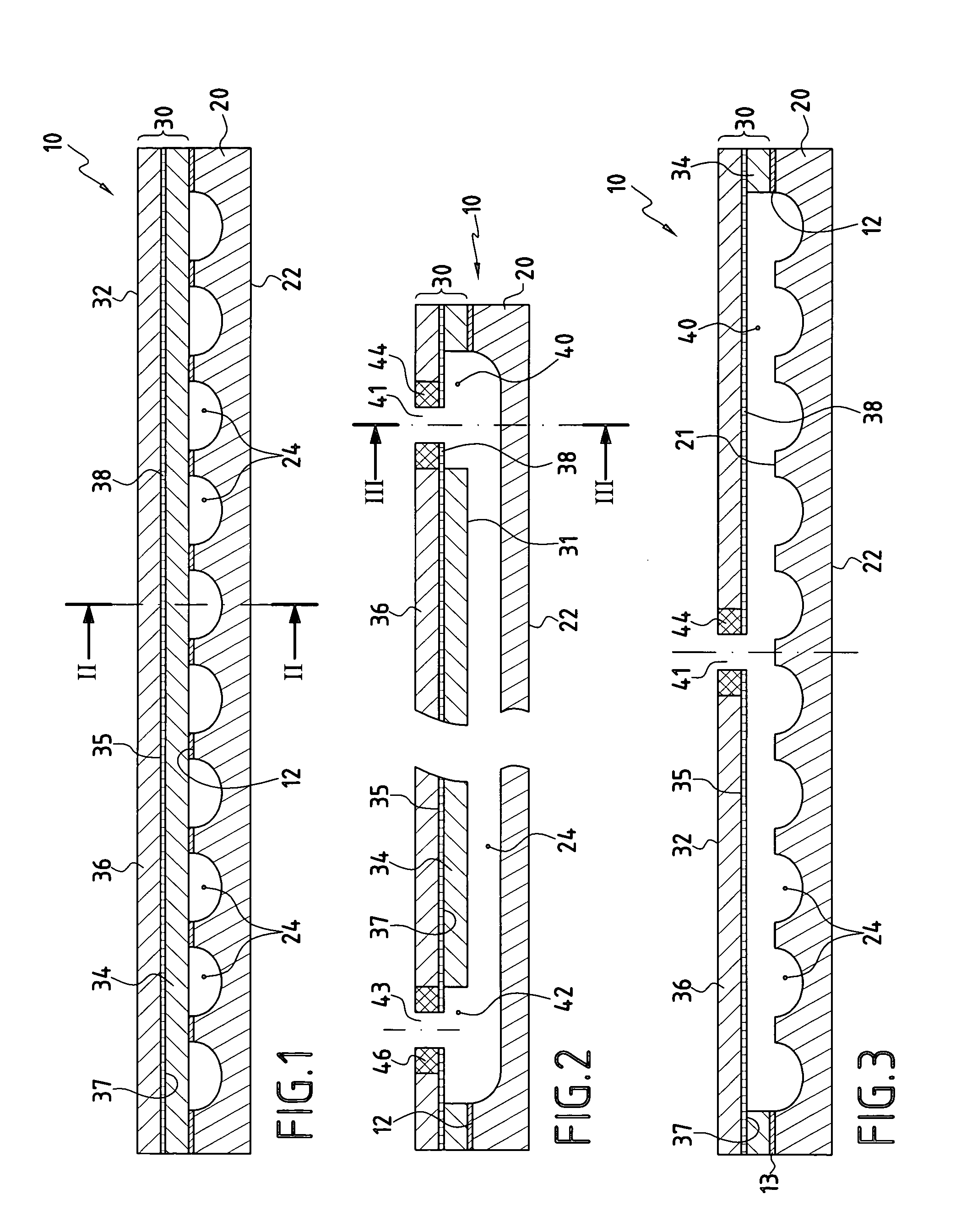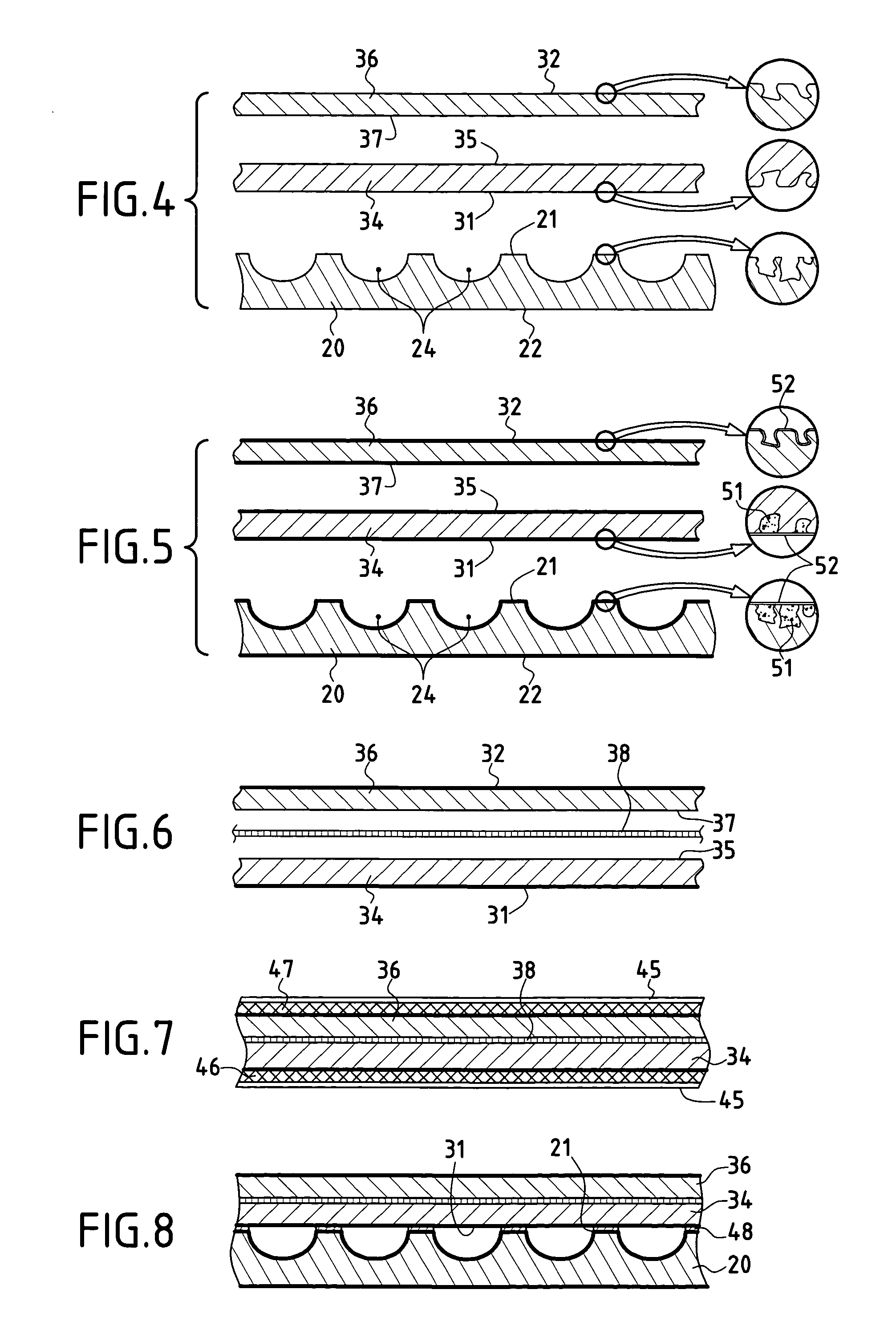Active cooling panel of thermostructural composite material and method for its manufacture
a composite material and active cooling technology, applied in the direction of engine cooling apparatus, combustion process, lighting and heating apparatus, etc., can solve the problems of limiting the capacity to cool the exposed surface, residual porosity of the thermostructural composite material, and unsuitable for use on its own
- Summary
- Abstract
- Description
- Claims
- Application Information
AI Technical Summary
Benefits of technology
Problems solved by technology
Method used
Image
Examples
first embodiment
[0045] an active cooling panel 10 is shown in FIGS. 1 to 3.
[0046] The panel 10 comprises two parts 20 and 30 that are generally in the form of rectangular parallelepipeds and that are assembled to each other via their inside faces 21 and 31. In this example, assembly is performed by brazing 12. The part 20 whose outside face 22 opposite from its face 21 defines the front face of the panel that is to be exposed to high temperatures or to intense heat flow is made of a thermostructural composite material. Channels 24 for circulating a cooling fluid are formed by indentations formed in the inside face 21. A plurality of channels 24 parallel to two opposite sides of the panel 10 extend between two manifolds 40, 42 that are internal to the panel 10 and that are situated close to two other opposite sides thereof.
[0047] The part 30 comprises two portions 34 and 36 in the form of plates made of thermostructural composite material. The portions 34 and 36 are assembled via facing faces 35, 37...
example
[0099] A part 20 and portions 34, 36 of the kind shown for the embodiment of FIGS. 1 to 3 have been made out of C / SiC thermostructural composite material, with the channels and the manifolds being formed by machining.
[0100] The porosity of the inside surfaces 21, 31 was reduced by brushing thereon a composition containing an SiC powder of mean grain size equal to about 9 microns (.mu.m) in a solution of PCS in xylene. After drying in air, the PCS was cross-linked at about 350.degree. C. and then transformed into SiC by raising the temperature to about 900.degree. C. A thin coating of SiC having thickness equal to about 100 .mu.m was then deposited by chemical vapor infiltration, said coating then being formed over the entire outside surface of the part 20 and the portion 34, and not only on the inside faces 21 and 31. In combination with the residue of ceramizing the PCS in association with the SiC powder, the SiC coating contributes to effective reduction of porosity.
[0101] The fac...
PUM
| Property | Measurement | Unit |
|---|---|---|
| temperature | aaaaa | aaaaa |
| temperature | aaaaa | aaaaa |
| thickness | aaaaa | aaaaa |
Abstract
Description
Claims
Application Information
 Login to View More
Login to View More - R&D
- Intellectual Property
- Life Sciences
- Materials
- Tech Scout
- Unparalleled Data Quality
- Higher Quality Content
- 60% Fewer Hallucinations
Browse by: Latest US Patents, China's latest patents, Technical Efficacy Thesaurus, Application Domain, Technology Topic, Popular Technical Reports.
© 2025 PatSnap. All rights reserved.Legal|Privacy policy|Modern Slavery Act Transparency Statement|Sitemap|About US| Contact US: help@patsnap.com



